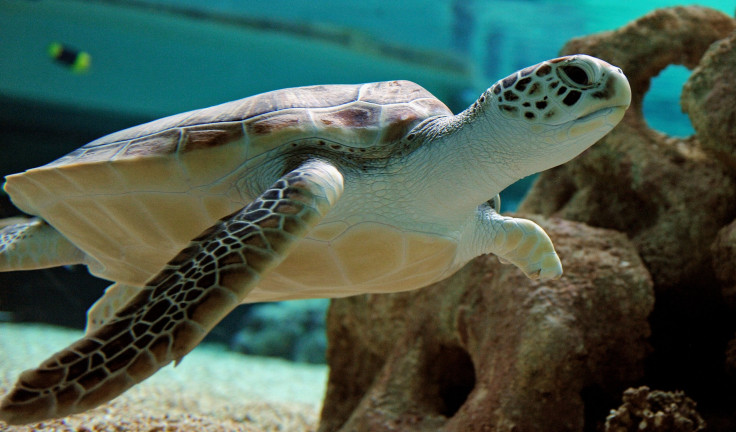World Turtle Day 2018: 7 Interesting Facts About The Shelled Reptiles

World Turtle Day is celebrated on May 23 — a day which has been sponsored by American Tortoise Rescue since the year 2000 to raise awareness about the fast-depleting population of turtles and to learn about ways to conserve these reptiles.
According to International Union for Conservation of Nature, 129 of around 300 species of turtles and tortoises are either vulnerable, endangered, or critically endangered in the present day.
One important message propagated by American Tortoise Rescue was to encourage people not to buy turtles from pet stores as they increase demand for wild turtles to be captured and sold in commercial markets. Moreover, turtles tend to outlive humans, which means regardless of your commitment towards your pet, you will eventually abandon it when you die. After being abandoned, most pet turtles tend to starve to death.
Want to know more about turtles? Here are some interesting facts about the reptiles:
1) Turtles existed on this Earth before most other members of the reptile family like snakes, lizards and alligators. They actually date back to the era of dinosaurs, which means they walked on this planet since at least 200 million years ago, National Geographic Kids reported.
2) The reason turtles date back to such ancient ages is also because of their longevity of life. An adult Indian Ocean Giant Tortoise, which was captured at the age of 50, went on to live another 152 years in captivity.
3) A turtle’s shell acts as its ribcage as well as spine, as it is made out of over 50 bones. It uses its bony and cartilaginous shell to shield itself from its predator. Certain types of turtles can even tuck their heads inside their shell for better protection. And yes, the notion that turtle can come out of its shell is nothing but a myth. This is because the shell of a turtle grows with the reptile.
4) Turtles are known to tough it out in almost any climate warm enough to facilitate their breeding cycle. This is why none of the continents other than Antarctica is a deal breaker for a turtle. However, most turtles do not like living in the cold, with a few exceptions. One of them is the Blanding's turtle, which has been observed swimming under the ice in the Great Lakes region, Doctor Foster and Smith reported.
5) While some turtles are carnivorous, others are herbivorous. Certain turtles are also omnivorous. But in reality, a turtle’s diet depends on its surroundings. Land-dwelling turtles are known to feed on beetles, fruit and grass, whereas those that dwell under the sea feast on everything from algae to squid and jellyfish.
6) Turtles have a keen sense of smell and hearing, which aids them when they are hunting for food or fleeing a predator. They have well-developed eyesight and the sense of touch, with their shells carrying a number of nerve endings.
7) Some types of turtles hibernate during specific seasons. These reptiles can absorb oxygen through the skin on their neck and cloacal areas, allowing them to stay submerged under water for prolonged periods of time and hibernate.
© Copyright IBTimes 2024. All rights reserved.












